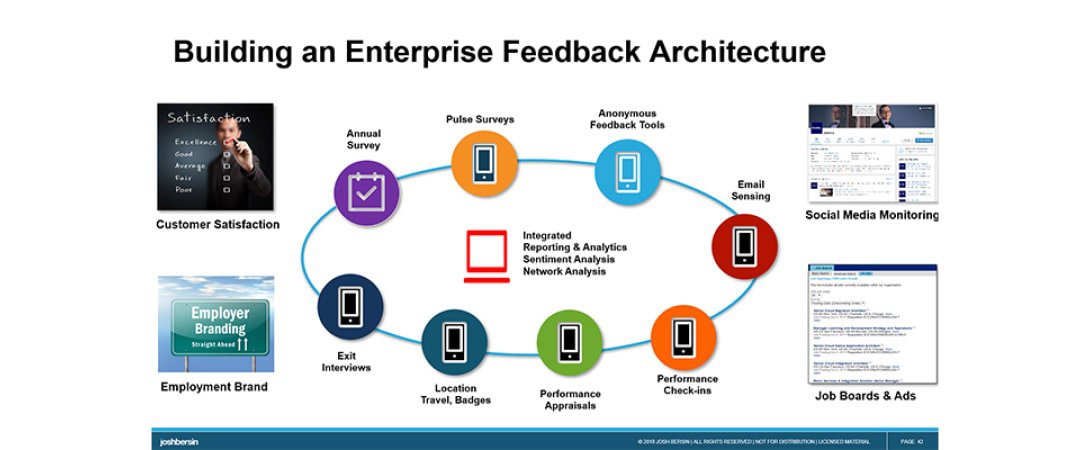5 Internal Communications Trends
08.07.2019 | Tom Haak

Internal communications is changing slowly. We still see many newsletters and magazines with the usual content (Interview with the CEO, Our office in Dubai, We ran for charity in Zurich and The secret hobby of ….). These newsletters and magazines hardly ever excite employees. Employees want to be heard, employees want to be taken serious and employees appreciate quick and honest communication.
What are some of the trends we expect to influence internal communications in 2019?
1. More listening, less sending
As we know, listening is difficult. I think that in many organisations senior management is kind of happy with the traditional processes. Annual performance reviews, and annual employee surveys (or once every two years). These processes are slow, and generally do not require immediate action (“We first have to study the results”). Senior management does not like immediate action. With the old processes, you can pretend you are listening, while you are not. Window dressing.
Organisations that really care, are more and more focusing on what is called “Continuous Listening”. In his article “Employee Engagement 3.0: Humu Launches Nudge Engine“, Josh Bersin outlined what an advanced Enterprise Feedback Architecture could look like.

2. More peer to peer and down-up, less top-down
Traditional internal communications is focused on top-down communications. What do our employees need to know? We can observe a slow long-term shift towards more peer to peer communications (community communications), combined with upwards communication, tapping on the wisdom of the crowd. The natural inclination in organisations is still top-down.
Example: many organisations are upgrading their onboarding process. There are several innovative solutions that can help to do this (like Talmundo and Appical). Most of the time the key question still is: “What do our new employees need to know?” and not “What can we learn from our new employees?”.
It has become a lot easier to gather good ideas and opinions of the employees in the organisation, without having to design long structured questionnaires. Powerful software able to analyse unstructured text is available from different suppliers. Bersin mentions a few in his article.
3. More personalisation
"Still many messages are addressed to “All” and not tailored to the individual profiles of the receivers."
In my article “10 inspiring HR trends for 2019” , I put Personalisation high on the list. Personalisation in internal communications has a long way to go. Still many messages are addressed to “All” and not tailored to the individual profiles of the receivers. A tool like Crystal has been around quite some time. Crystal can help you to get an indication of the personality of the receivers and enables you to adapt the message to the personality of the receiver. I am not aware of organisations using these kinds of tools in their internal communications.
Personalisation can be simple. If I book a flight at KLM, they ask me through which channel I would like to receive the boarding pass and other information about the flight: email, WhatsApp or SMS.
4. Measurement translated into action – fast
Under point 1 I mentioned the slowness of traditional processes. The current primary processes in organisations (agile, design thinking) require fast feedback, and quick action based on the feedback.
"Internal Communications Analytics can be developed. Simple top down communications can also benefit from communication analytics."
Internal Communications Analytics can be developed. Simple top down communications can also benefit from communication analytics. How many employees received and digested our message? Which channels worked best for which employees? Was the essence of the message understood? Did people take action after the message? Which visual worked best?
Continuous listening only makes sense if you are prepared for quick action, at the right level. Example: many recruiters can see through LinkedIn which employees in their organisation are looking for other jobs, outside the organisation. Often the employees are aware, and if their job search is visible, they do not care. It makes sense for the recruiter (or someone else in HR), to contact the employee and ask if she can help to find a suitable internal next step.
5. More visuals and video, less text
We see more and more focus on visual communications. The corporate use of Instagram and Facebook seems to increase. Career sites and intranets often contain many visual messages. The credibility of the messages is higher, when they are produced by real people, and not by the communications department. There are nice tools (as Seenit) that can help. Example: last year we made a little video for the Hacking HR Forum in London, and the speakers collectively made a short video, shot with the help of Seenit.
Hier die Videos einfügen!


